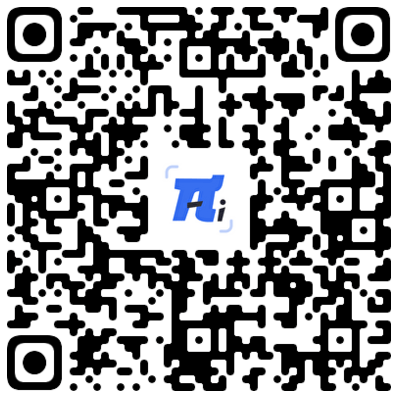[2025 Tests]Perplexity AI vs ChatGPT: Which is Better?
When it comes to AI chatbots, choosing between Perplexity AI vs ChatGPT can feel like comparing two expert assistants with different specialties.
While both AI platforms promise to solve users’ problems and assist with various tasks, each brings unique capabilities to the table. The following is a comprehensive comparison between Perplexity and ChatGPT, examining their core capabilities and pricing to help you decide which AI assistant better suits your needs.

In this article:
- Perplexity AI vs ChatGPT: Core Capabilities Compared
- Search Integration: Real-time vs Knowledge Cutoff
- Citation and Source Attribution
- Multimodal Support: Text, Images, and Audio
- Perplexity vs ChatGPT: User Experience and Interface Comparison
- Pricing and Value Proposition
- Better Choice to Try AI Models - ChatArt
Perplexity AI vs ChatGPT: Core Capabilities Compared
At their core, Perplexity and ChatGPT operate with fundamentally different design philosophies. These differences shape how each AI assistant processes information and responds to user queries.
1 Search Integration: Real-time vs Knowledge Cutoff
The most significant distinction between Perplexity and ChatGPT lies in how they access information. Perplexity functions as an "answer engine" that actively searches the web in real-time to access the up-to-date information, making it particularly valuable for queries about recent events or rapidly evolving topics.
In contrast, ChatGPT relies primarily on pre-trained knowledge with a specific cutoff date. Without using its browsing capability, ChatGPT cannot access information beyond its training data. This limitation becomes apparent when asking about current events or recent developments.
Perplexity offers several search options that enhance its information retrieval capabilities:
Pro Search: Delivers deeper, more comprehensive answers (limited to five queries every four hours for free users)
Basic Search: Provides standard information retrieval using the default model
Specialized Searc: Options to search academic papers, WolframAlpha, YouTube, or Reddit
Furthermore, Perplexity allows users to select from different AI models, including GPT-4o, Sonar 32k (based on Meta's Llama 3), etc. This flexibility enables users to choose the best model for specific types of queries.
2 Citation and Source Attribution
Notably, Perplexity implements Retrieval-Augmented Generation (RAG), a technique that queries external data sources before generating responses. This approach provides two key benefits: it reduces AI errors and enables source citation.
Each Perplexity response includes clickable references that allow users to verify information directly. This transparency is particularly valuable in academic and professional settings where source credibility matters.
Although ChatGPT is a powerful tool, it doesn't include citations in its responses. This is a key limitation, as studies have shown that generative AI models can confidently present inaccurate information—making their authoritative tone potentially misleading. To ensure correct information, users are responsible for fact-checking important details on their own.
3 Multimodal Support: Text, Images, and Audio
Both platforms have evolved to support multiple input and output formats, although with different implementations. ChatGPT especially the latest GPT-4.1 represents a significant advancement with its ability to process text, images, audio, and video inputs. This multimodal capability allows ChatGPT to "see, hear, and speak," making interactions more versatile and accessible.
ChatGPT-4.1's multimodal features include:
- Processing both text and image inputs even outputs
- Enhanced reasoning across technical discussions
- Expanded context retention
- Advanced multilingual support across 50+ languages
Perplexity has also incorporated multimodal capabilities.
Perplexity AI's multimodal features include:
- Allow users to upload and analyze different media formats.
- Generate AI images, visualize data, search PDFs, texts, and images.
- Provide voice responses using four different voice options.
Ultimately, the core strengths of each platform highlight their distinct purposes: Perplexity is designed as a research-first tool that prioritizes transparency, while ChatGPT excels as a versatile conversational AI with powerful reasoning capabilities. Users can choose between ChatGPT and Perplexity based on their specific needs.
Perplexity vs ChatGPT: User Experience and Interface Comparison
The interface design and user experience fundamentally shape how we interact with AI assistants.
1 Conversation Flow and Context Retention
Context retention represents a critical factor in creating natural AI interactions. ChatGPT excels at offering "coherent, contextually relevant dialog" that keeps users engaged across diverse topics. This contextual awareness allows for conversations that feel genuinely interactive rather than disjointed series of queries.
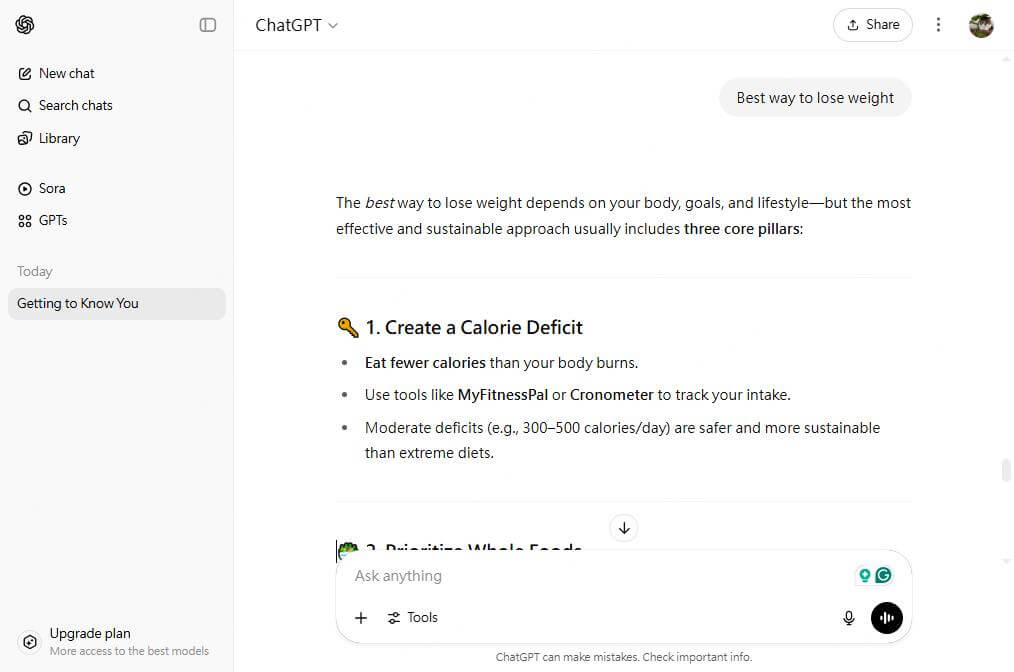
Perplexity takes a different approach by organizing searches into threads, effectively preserving context throughout a research session. Each thread includes prompts for related questions, making topic navigation more intuitive.
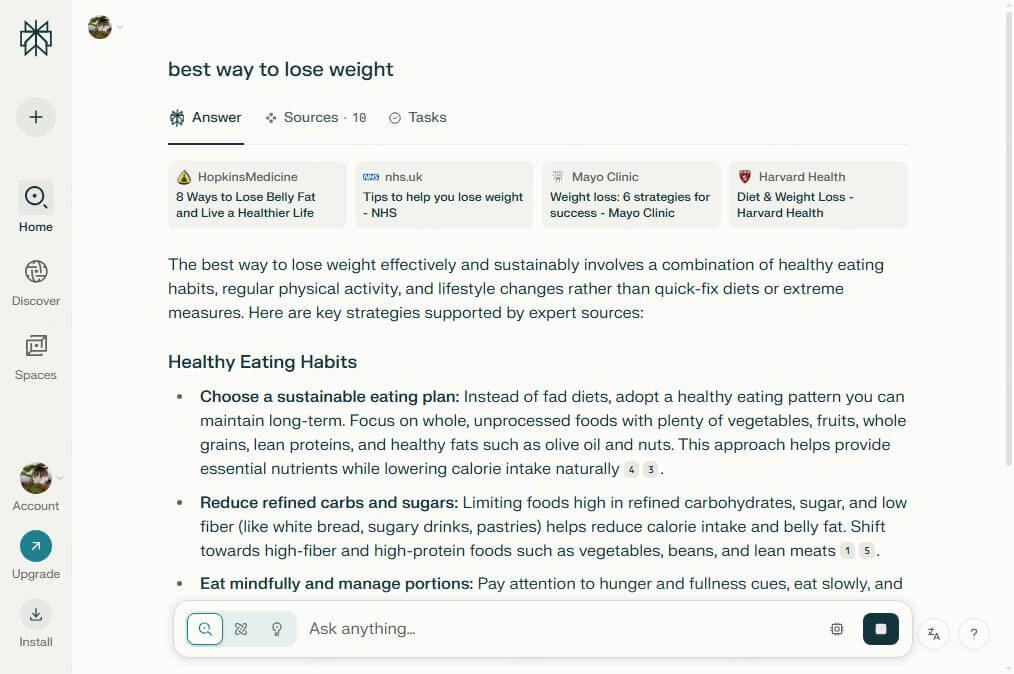
Both platforms struggle with similar limitations:
- Managing non-linear conversations that switch topics abruptly
- Balancing session memory with computational efficiency
- Maintaining context across extended conversations
Unlike traditional AI chatbots that treated each user input as isolated, these advanced AI platforms analyze relationships between words to derive meaning, allowing them to understand context, intent, and nuance in ways earlier AI could not.
2 Mobile App Experience
On mobile devices, each platform offers distinct advantages. Perplexity delivers what many users describe as a "fresh and crisp" interface where "all the elements look thought after and are designed very well." Its mobile experience includes interactive elements that make prompt results more resourceful than ChatGPT's plainer responses.
Essentially, Perplexity enhances the mobile experience with features like:
- A "Discover" section showing popular threads with view counts and likes.
- Interactive charts and visualizations for data queries.
- Direct shopping integration for product-related searches.
Alternatively, ChatGPT focuses on conversation accessibility, offering text-to-speech capabilities and audio dialog options. Its mobile interface prioritizes clean design that "does enough to satisfy the user intent" without unnecessary complications.
Ultimately, while ChatGPT maintains consistent performance across desktop and mobile platforms, Perplexity appears to offer a slightly more engaging mobile-specific experience with its interactive elements and discovery features.
Pricing and Value Proposition
Deciding between premium AI services requires understanding what you get for your money. Interestingly, both Perplexity and ChatGPT have adopted identical price points for their primary subscription tiers at $20 per month, creating a direct value comparison.
1 Limitations of Free Version
The free versions of both platforms offer substantial capabilities with notable restrictions:
ChatGPT Free:
- Limited access to GPT-4o with usage restrictions within a five-hour window.
- Downgrades to GPT-3.5 after reaching message limits (potentially after as few as 10 queries).
- Basic web search powered by Bing.
- Limited file uploading and data analysis capabilities.
Perplexity Free:
- Unlimited quick searches using the default AI model.
- Only 5 Pro searches per day with slightly more advanced models.
- Basic profile features for creating threads and collections.
2 Premium Features Worth Paying For
At $20 monthly, each platform unlocks distinct premium benefits:
Perplexity Pro:
- 300+ daily Pro searches versus just 5 in the free version.
- Access to multiple advanced AI models including GPT-4o, etc.
- File analysis for PDFs, CSVs, and images.
- $5 monthly API credit included.
- Image generation powered by DALL-E 3, SDXL, and Playground AI.
ChatGPT Plus:
- Unlimited access to GPT-4o, and GPT-4.1 without downgrading to previous models
- Always-online connection for up-to-date information.
- Enhanced data analysis with visualization capabilities.
- Image generation through DALL-E 3, and GPT-4.1.
- Access to custom GPTs from the store.
Overall, for individual users, the decision primarily depends on whether you prioritize Perplexity's research-centric approach with cited sources or ChatGPT's versatile creative and reasoning capabilities.
Better Choice to Try AI Models - ChatArt
Still undecided between ChatGPT and Perplexity? The good news is—you don’t have to choose any one from them. With the cutting-edge AI tool ChatArt), you can seamlessly explore and compare multiple top-tier AI models like GPT-4.1, Claude, Gemini, and more—all in one place, no extra logins or platform switching required.
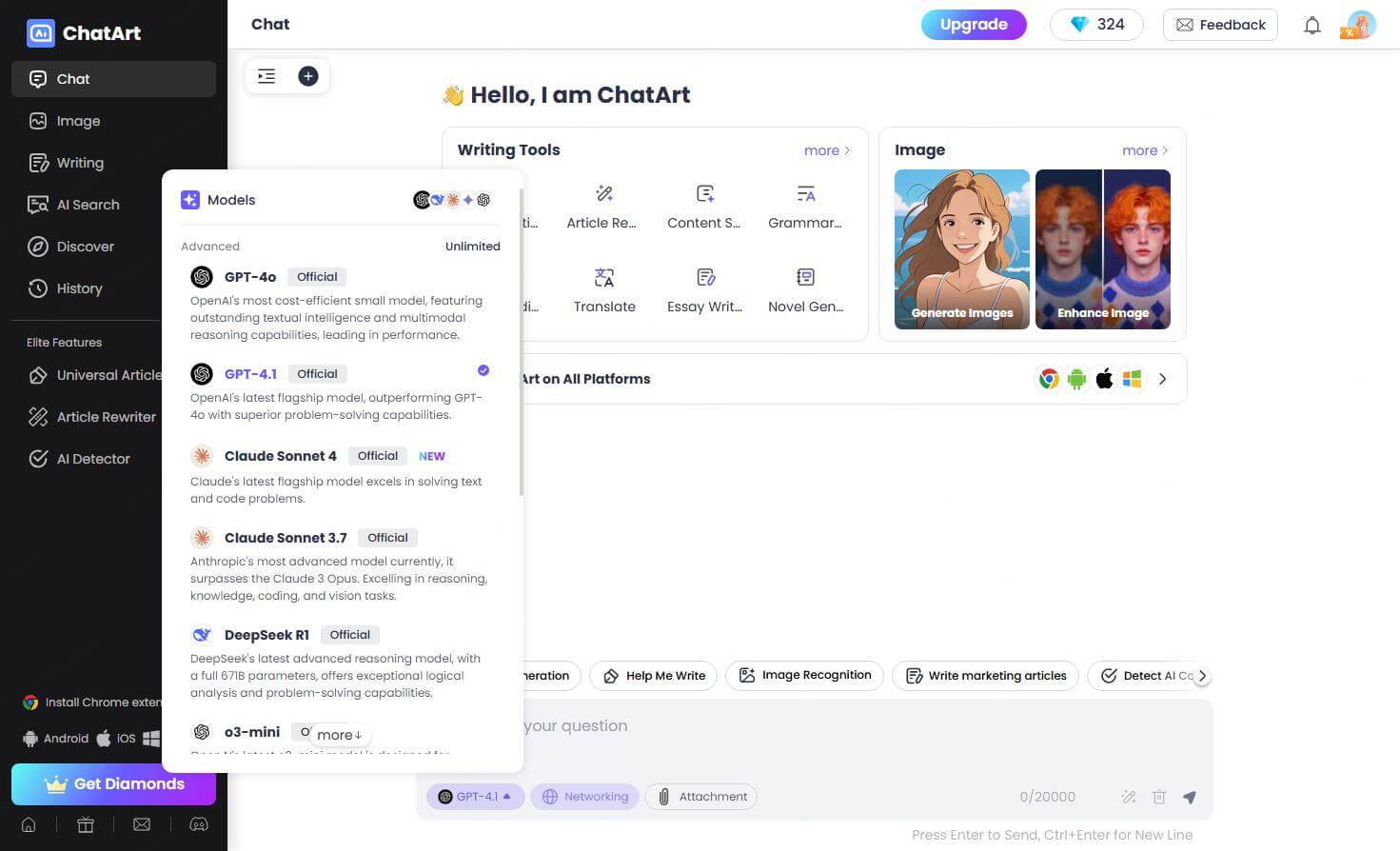

ChatArt - The best AI chat, AI writing, and marketing assistant
5,323,556 users have tried it for free
- Instantly switch between different functions and AI models for different tasks: DeepSeek, GPT-4.1, GPT-4o, Claude Sonnet 4, Gemini 2.0 Pro, etc.
- Easy-to-use Math Solver: Take a picture and upload it to ChatArt math solver for the answer and steps.
- Over 100 writing templates are available, supporting text export in multiple languages.
- Content paraphraser and bypass AI detector help create 100% original text content, fully freeing up your writing inspiration!
Conclusion
Whether you're a content creator, researcher, marketer, or just exploring the power of AI in your daily work, ChatArt offers the smartest way to experience and compare the best AI tools available. Instead of choosing from Perplexity or ChatGPT, try them all in ChatArt.

How to Generate Short Film Script Outline with ChatArt Pro
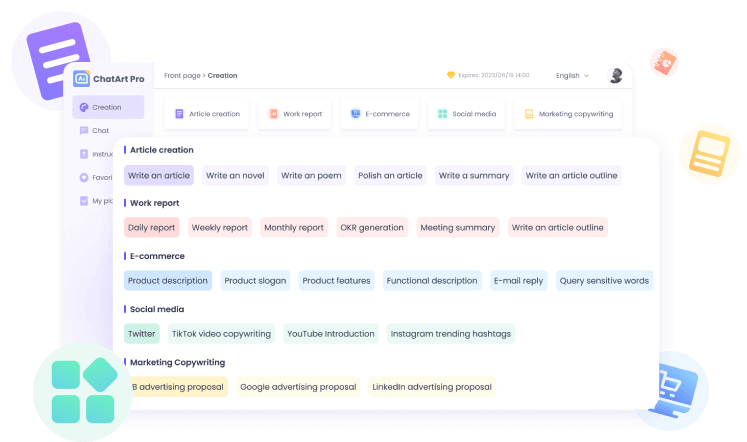
Free AI Tinder Bio Generator

Free Product Review Generator







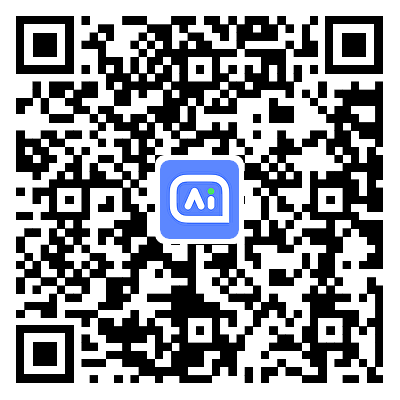
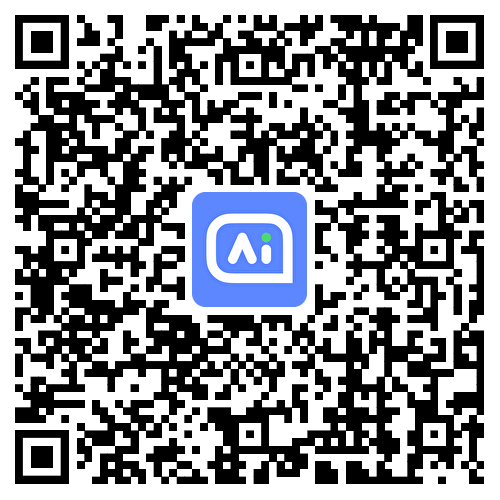
 OpenAI series (including GPT-5 & 4.1)
OpenAI series (including GPT-5 & 4.1)
 Claude series (including Claude Sonnet 4.5 & 4)
Claude series (including Claude Sonnet 4.5 & 4)
 Gemini Series (including Gemini 2.0 Pro)
Gemini Series (including Gemini 2.0 Pro)
 DeepSeek Series (including DeepSeek R1)
DeepSeek Series (including DeepSeek R1)













